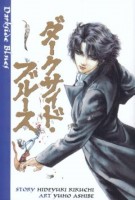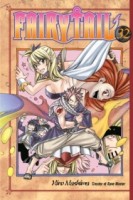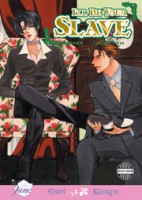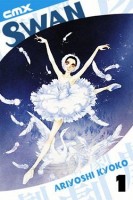My News and Reviews
Keeping this short and sweet because boy do I have a lot of stuff going on right now! Last week at Experiments in manga the Barakamon manga giveaway winner was announced. The post also includes a list of manga with prominent countryside settings for anyone interested in exploring some of what has been published in English. As for the first in-depth manga review of the month, I took a look at Junji Ito’s Cat Dairy: Yon & Mu which I found to be highly entertaining. I expected that I would at least like the manga, but I absolutely loved its weird mix of not-exactly-horror and comedy.
A few things of interest that I came across online last week: The most recent Sparkler Podcast focuses on what it’s like Working in the Manga Industry. (The podcast is currently only free for Sparkler Monthly members. Non-members can either purchase it now, or simply wait a few weeks.) Over at Anime New Network, Deb Aoki has been talking to the folks at Kodansha about the upcoming Attack on Titan anthology and bridging the gap between American comics and manga. Finally, Seven Seas slipped in a new license announcement: Monster Musume: I ♥ Monster Girls, a yonkoma spinoff from Okayado’s main series.
Quick Takes
 My Little Monster, Volume 10 by Robico. The last few volumes of My Little Monster have been getting progressively more serious to the point where, overall, the tenth seems to hardly have any humor at all. This is quite a change from the beginning of the series where the manga’s balance leaned more towards comedy and the more humorous aspects of the interactions between its oddball characters. I did really like this volume, though. Basically, Haru’s past and present are now colliding and the results are appropriately dramatic as everyone involved deals with the fallout. There are hurt and conflicted feelings, and many complications and frustrations. For one, Haru’s family circumstances are more fully explained, showing how the intense antagonism between him and his brother came about and just how awful a person their father is. A significant portion of My Little Monster, Volume 10 actually explores the story through the perspective of Haru’s brother Yuzan, which I was glad to see. He’s still not particularly pleasant, but being able to better understand his and Haru’s situation makes him less of an enigma and a much more sympathetic and interesting character.
My Little Monster, Volume 10 by Robico. The last few volumes of My Little Monster have been getting progressively more serious to the point where, overall, the tenth seems to hardly have any humor at all. This is quite a change from the beginning of the series where the manga’s balance leaned more towards comedy and the more humorous aspects of the interactions between its oddball characters. I did really like this volume, though. Basically, Haru’s past and present are now colliding and the results are appropriately dramatic as everyone involved deals with the fallout. There are hurt and conflicted feelings, and many complications and frustrations. For one, Haru’s family circumstances are more fully explained, showing how the intense antagonism between him and his brother came about and just how awful a person their father is. A significant portion of My Little Monster, Volume 10 actually explores the story through the perspective of Haru’s brother Yuzan, which I was glad to see. He’s still not particularly pleasant, but being able to better understand his and Haru’s situation makes him less of an enigma and a much more sympathetic and interesting character.
 Suikoden III: The Successor of Fate, Volumes 6-11 by Aki Shimizu. I still haven’t played any of the Suikoden games, although based solely on the manga adaptation of the third, it’s likely a to be franchise that I would enjoy. I liked the first five volumes of Shimizu’s Suikoden III, but the final six cemented my appreciation for the manga–it’s a solid epic fantasy series with both magic and military might. Although it is a video game adaptation and in a few places the RPG mechanics can be seen if one is looking for them, the manga stands very well on its own and doesn’t really feel too game-like. The second half of the series more fully delves into the antagonist’s backstory which was needed as his motivations are much more complicated than would initially appear. One of the things I like the most about the Suikoden III manga is that nothing is strictly good or evil, the characters and their actions are more nuanced than that. Under the weight of war and inherited responsibilities they must all try to hold onto their ideals while at the same time making compromises in order to protect what and who they love. Enemies become allies and in some cases even friends, but it is a hard journey.
Suikoden III: The Successor of Fate, Volumes 6-11 by Aki Shimizu. I still haven’t played any of the Suikoden games, although based solely on the manga adaptation of the third, it’s likely a to be franchise that I would enjoy. I liked the first five volumes of Shimizu’s Suikoden III, but the final six cemented my appreciation for the manga–it’s a solid epic fantasy series with both magic and military might. Although it is a video game adaptation and in a few places the RPG mechanics can be seen if one is looking for them, the manga stands very well on its own and doesn’t really feel too game-like. The second half of the series more fully delves into the antagonist’s backstory which was needed as his motivations are much more complicated than would initially appear. One of the things I like the most about the Suikoden III manga is that nothing is strictly good or evil, the characters and their actions are more nuanced than that. Under the weight of war and inherited responsibilities they must all try to hold onto their ideals while at the same time making compromises in order to protect what and who they love. Enemies become allies and in some cases even friends, but it is a hard journey.
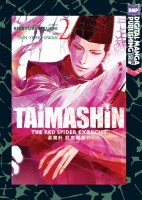 Taimashin: The Red Spider Exorcist, Volume 2 written by Hideyuki Kikuchi and illustrated by Shin Yong-Gwan. Although all six volumes of Taimashin have been translated into English, only the first two were released in print; the other four volumes are only available digitally. It’s been a long while since I’ve read the first volume in the series, but I do distinctly recall liking it, or at being enthralled by Akamushi Fujiwara, the titular Red Spider Exorcist who may be a human, a demon, or something else entirely. Reading the second volume, Akamushi still fascinates me and is probably my favorite part of the manga. For the most part I would classify Taimashin as a horror manga although, as I’ve come to expect from Kikuchi’s works, it also has distinct elements of science fiction and fantasy. While it doesn’t always make a lot of sense, the manga can be both thrilling and creepy. This is actually something else that I associate with Kikuchi–he writes these bizarrely engaging stories with ominous atmospheres that end up being all over the place. Taimashin‘s artwork fits the story and characters particularly well, ranging from Akamushi’s otherworldly beauty to scenes that are frankly grotesque.
Taimashin: The Red Spider Exorcist, Volume 2 written by Hideyuki Kikuchi and illustrated by Shin Yong-Gwan. Although all six volumes of Taimashin have been translated into English, only the first two were released in print; the other four volumes are only available digitally. It’s been a long while since I’ve read the first volume in the series, but I do distinctly recall liking it, or at being enthralled by Akamushi Fujiwara, the titular Red Spider Exorcist who may be a human, a demon, or something else entirely. Reading the second volume, Akamushi still fascinates me and is probably my favorite part of the manga. For the most part I would classify Taimashin as a horror manga although, as I’ve come to expect from Kikuchi’s works, it also has distinct elements of science fiction and fantasy. While it doesn’t always make a lot of sense, the manga can be both thrilling and creepy. This is actually something else that I associate with Kikuchi–he writes these bizarrely engaging stories with ominous atmospheres that end up being all over the place. Taimashin‘s artwork fits the story and characters particularly well, ranging from Akamushi’s otherworldly beauty to scenes that are frankly grotesque.

